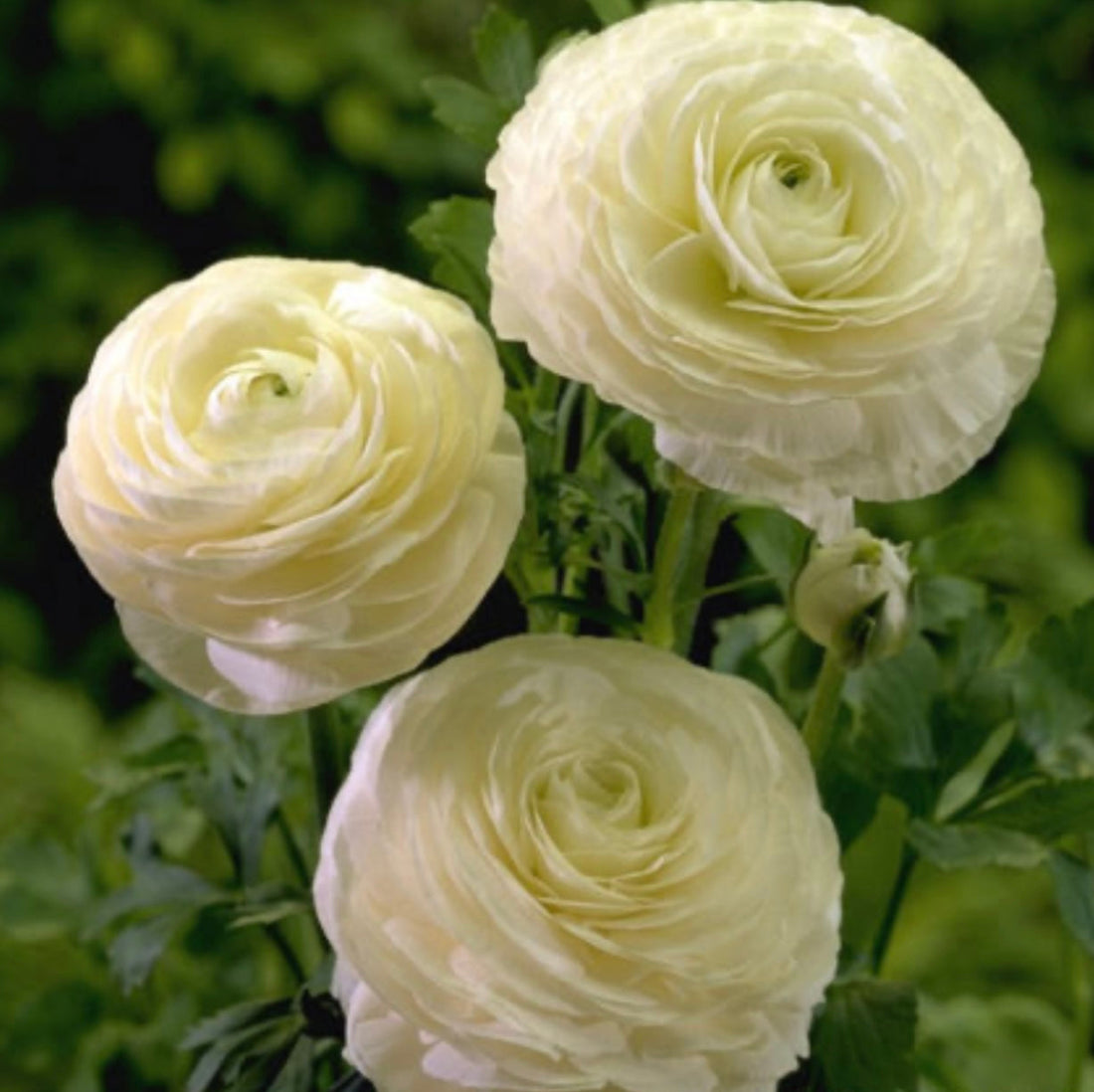
Growing ranunculus in Connecticut
Share
How to Grow Ranunculus in Connecticut
Ranunculus, with their delicate, layered petals and vibrant colors, are a favorite among flower farmers and florists alike. While they thrive in cool weather, growing them successfully in Connecticut requires careful planning due to the state’s fluctuating temperatures. By following these key steps, you can cultivate healthy, high-yielding ranunculus.
1. Choosing the Right Ranunculus Corms
Start with high-quality corms from reputable suppliers. Larger corms (also called tubers) typically produce more robust blooms. Popular varieties for cut flowers include ‘Amandine’ and ‘La Belle,’ which offer long stems and excellent vase life.
2. Timing & Pre-Sprouting
Connecticut’s climate makes pre-sprouting ranunculus essential for early planting. Since ranunculus prefers cool temperatures, plant corms in late winter to early spring for spring blooms. Here’s how to pre-sprout:
-
Soak corms in room-temperature water for 3–4 hours, changing the water every hour.
-
Drain and place them in a tray filled with damp vermiculite or peat moss.
-
Store in a cool (40–50°F), dark area for 10–14 days until they develop small root nubs.
-
Check periodically for mold and moisture balance—too much humidity can lead to rot.
3. Planting in Connecticut’s Climate
Once pre-sprouted, plant the corms outdoors when the soil temperature is consistently above freezing but still cool (around mid-March to early April in Connecticut). If starting indoors, use a cold greenhouse or high tunnel for earlier blooms.
Soil & Spacing
-
Choose well-drained, fertile soil with a pH of 6.0–6.5.
-
Amend with compost to improve organic matter.
-
Plant corms 2 inches deep and 6–9 inches apart in rows or raised beds.
-
Ensure full sun exposure for optimal growth.
4. Protecting from Frost & Pests
Ranunculus can tolerate light frosts but need protection from harsh freezes. Consider:
-
Frost Cloth or Low Tunnels: Cover plants on nights below 30°F.
-
Rodent Protection: Use wire mesh or row covers to prevent voles from eating corms.
-
Slug & Pest Control: Apply organic slug bait and check for aphids, which can damage buds.
5. Watering & Fertilization
-
Keep soil consistently moist but not waterlogged—overwatering can cause root rot.
-
Use a balanced liquid fertilizer every two weeks during active growth.
-
Avoid overhead watering to prevent fungal diseases.
6. Harvesting Ranunculus
Ranunculus blooms are ready to harvest when buds are colored and soft but not fully open. Cut stems in the cool morning and hydrate in fresh water. With proper post-harvest care, ranunculus can last 10+ days in a vase.
Final Thoughts
Growing ranunculus in Connecticut requires careful timing, soil preparation, and frost protection, but the reward is a stunning spring harvest. With their high market value and demand for weddings and bouquets, ranunculus can be a profitable and beautiful addition to any flower farm
